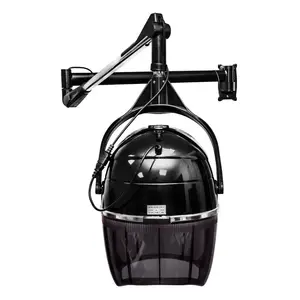Popular in your industry













 Ready to Ship
Ready to Ship
















































































 Ready to Ship
Ready to Ship






























































 Ready to Ship
Ready to ShipTop categories
About bladeless cooling fan
Introduction
In the relentless pursuit of comfort, mankind has seen the evolution of cooling systems from manually powered rotary fans to smart technologies. The latest innovation in this journey is the bladeless fan, a groundbreaking technology that has revolutionized the industry. This article delves into the history of cooling systems, the emergence and workings of bladeless fans, their benefits, and the future of this technology. It also explores the environmental impact of these fans and the challenges in scaling this technology for larger applications.
The Evolution of Cooling Systems
Cooling technology has evolved significantly since its inception in second-century China. The first cooling system was a manually powered rotary fan. Over time, cooling systems have incorporated smart technologies, adapting to new needs such as cooling data centres and computer systems. The evolution of cooling technology has been driven by a desire to increase comfort, particularly in warmer climates, and has led to innovations such as air conditioning and refrigeration.
The Emergence of Bladeless Fans
The concept of the bladeless fan, also known as the Air Multiplier, was initially created in the early 1980s. This innovative technology was introduced to the consumer market in 2009, revolutionizing the industry. The Air Multiplier was so groundbreaking that it was included in a list of the top 50 inventions of 2009. Despite its name, the bladeless fan does have blades, but they are hidden in the base, providing a unique and efficient design.
How Bladeless Fans Work
The bladeless ceiling fan operates on a unique and patented principle. It draws in air from below and disperses it in a 360-degree pattern around the room, creating a wrapping effect. This results in a pleasant breeze throughout the room, not just under the fan. The absence of blades reduces friction and air noises, making the fan quiet and energy-efficient. It's a discreet and effective alternative to traditional fans.
The Science Behind the Technology
The bladeless fan, also known as an Air Multiplier fan, operates on a unique principle. Despite the name, these fans do have blades, but they are hidden in the base. The initial air stream slows down, resulting in a new total flow with a much higher flow rate than the original. This design mitigates the buffeting that occurs in conventional fans due to their lower number of larger blades, which push air inconsistently across the air stream's cross section. By collecting the full airflow of the small fan, any buffeting is 'averaged out', providing a smoother, more consistent airflow.
Benefits of Bladeless Fans
Bladeless fans offer numerous advantages over traditional fans. They maximize airflow, providing more cooling. They are quieter, with decibel levels ranging from 37 to 57. Bladeless fans are safer, especially for households with children, as there are no external blades. They are energy-efficient, consuming between 30 to 50 watts per hour. Aesthetically pleasing, they blend with home decor and are easy to clean. Some models offer extra features like heating, air purification, and sleep timers. Thus, a bladeless fan is a superior investment for cooling needs.
Safety and Efficiency
Bladeless ceiling fans are more energy efficient due to their operation method: they draw air into themselves and then push it out, resulting in a steadier, more even airflow that cools down a room faster. Their compact designs also use less energy than traditional fans. Furthermore, they are safer as there are no moving parts outside the base, reducing the risk of injury. They produce less vibration, which decreases the chances of them shaking loose and falling.
Aesthetics and Noise Reduction
The medium size portable bladeless fan is not just a cooling device, but also a stylish and modern addition to any room. Its sleek black design is aesthetically pleasing, fitting seamlessly into any decor. But it's not just about looks - this fan is designed with noise reduction in mind. Operating at a noise level lower than 60 Hz, it ensures a quiet, comfortable environment. Its 10-speed settings allow for precise adjustments to suit your comfort, making it a perfect blend of aesthetics and noise reduction.
Environmental Impact
Bladeless fans are an environmentally friendly cooling option. They are energy-efficient, using less power than traditional fans and air conditioners. The materials used in their construction are often recyclable, reducing waste. However, like all appliances, they do have an environmental impact. Their production involves the use of non-renewable resources and energy, contributing to greenhouse gas emissions. Despite these factors, their energy efficiency and recyclability make them a greener choice for cooling.
The Future of Bladeless Fans
The future of bladeless fans is promising, driven by technological advancements and a focus on energy efficiency. Manufacturers are investing in research and development to enhance the features of bladeless fans, incorporating IoT capabilities and smart home integration. Innovations such as improved bladeless designs and the integration of air purifying features are making these fans more convenient and energy-efficient. The constant drive for innovation, energy efficiency, and air purification technologies propels the growth of the Bladeless Fan market. However, high initial costs and limited affordability may hinder market growth, particularly among consumers with lower disposable incomes.
Innovations and Developments
In the realm of bladeless fan technology, significant strides have been made. A patented fluidic propulsion system (FPS) has been developed for high-speed vertical take-off and landing (VTOL) military aircraft. This innovative '3-in-1' propulsion system is scalable and can power aircraft with a takeoff weight of up to 10,000 pounds. Similar to bladeless electric fans, the FPS has no visible moving parts or propellers. Instead, it uses a small flow of compressed air to suck in a larger volume of ambient air, creating a vortex that significantly amplifies the airflow.
Potential Challenges
While bladeless fans offer many advantages, scaling this technology to larger applications presents challenges. The power output of these fans is significantly weaker than conventional fans, making them inefficient for high-speed applications. Additionally, the Venturi effect, which these fans rely on, becomes less effective at greater distances. This means that scaling up the technology would require a complex and heavy system of ejectors, reducing the overall efficiency. Furthermore, the design does not prevent core damage, which is a significant concern in larger applications such as aircraft engines.
Conclusion
Bladeless fans, with their unique design and efficient operation, have revolutionized the cooling industry. They offer numerous advantages over traditional fans, including safety, energy efficiency, and aesthetic appeal. Despite the challenges in scaling this technology for larger applications, the future of bladeless fans is promising, with continuous innovations and developments. However, it is crucial to consider their environmental impact and strive for sustainable practices in their production and use. As we move forward, the bladeless fan stands as a testament to human ingenuity and our relentless pursuit of comfort and efficiency.










































































